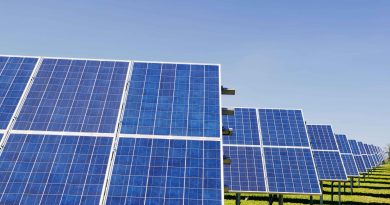How Much Electricity Does Solar Panels Save?
Investing in solar panels can lead to significant electricity savings, but understanding how to estimate these savings is crucial for making informed decisions. This blog explains how to calculate potential energy production based on solar panel wattage, system efficiency, and location. It also discusses factors affecting energy output, net metering, time-of-use rates, and the overall impact on electricity savings.
Table of Contents
- 1 Understanding Solar Panel Energy Production
- 1.1 Example Calculation:
- 1.2 Factors Affecting Solar Energy Output
- 1.3 Calculating Potential Electricity Savings
- 1.4 The Role of Net Metering and Feed-In Tariffs
- 1.5 Example Calculation of Monthly and Annual Electricity Savings from Solar Panels
- 1.6 Factors Affecting Solar Energy Output
- 1.7 Impact of Net Metering and TOU Rates on Savings
- 1.8 Time-of-Use Electricity Rates and Solar Savings
- 1.9 Payback Period for Solar Panel Investments
- 1.10 Comparing Solar Energy Savings to Traditional Electricity Costs
- 1.11 Maximizing Solar Energy Production to Increase Savings
- 1.12 The Impact of Battery Storage on Electricity Savings
- 1.13 Conclusion
- 1.14 FAQs
Understanding Solar Panel Energy Production
Solar panels generate electricity by converting sunlight into electrical energy. The amount of energy produced depends on several key factors:
1. Solar Panel Wattage: The power output of a solar panel under standard test conditions, typically ranging from 250W to 400W.
2. System Size: The total wattage of the solar panel system, calculated by multiplying the number of panels by the wattage of each panel.
3. Sunlight Hours: The average number of sunlight hours your location receives per day, which influences the total energy output.
Example Calculation:
For a 5kW system with 300W panels in an area receiving 5 sunlight hours per day:
- Total Panels: 5,000W / 300W = ~17 panels
- Daily Energy Production: 5,000W * 5 hours = 25,000Wh or 25kWh
- Monthly Energy Production: 25kWh * 30 days = 750kWh
Factors Affecting Solar Energy Output
The energy output of a solar panel system is influenced by various environmental and system-specific factors:
Sunlight Availability: More sunlight hours result in higher energy production. Geographic location plays a significant role in sunlight availability.
Temperature: High temperatures can reduce the efficiency of solar panels, leading to lower energy production.
Shading: Shading from trees, buildings, or other obstructions can significantly reduce the output of solar panels.
Panel Orientation and Tilt: Optimal orientation (usually south-facing in the northern hemisphere) and tilt angle can maximize sunlight exposure.
Calculating Potential Electricity Savings
To estimate electricity savings, calculate the energy production and compare it to your current electricity usage and rates.
Example Calculation:
Assume a monthly electricity usage of 900kWh and a rate of ₹7 per kWh:
- Monthly Solar Production: 750kWh (from the example above)
- Savings: 750kWh * ₹7 = ₹5,250 per month
- Annual Savings: ₹5,250 * 12 = ₹63,000
The Role of Net Metering and Feed-In Tariffs
Net metering allows you to send excess electricity generated by your solar panels back to the grid, receiving credits on your electricity bill.
- Net Metering: If your system produces more electricity than you use, the excess is fed into the grid, and you receive a credit that can offset future electricity costs.
- Feed-In Tariffs: In some regions, you may receive a fixed payment for each unit of electricity you export to the grid.
Example Calculation of Monthly and Annual Electricity Savings from Solar Panels
| Factor | Example Value |
|---|---|
| System Size | 5 kW |
| Panel Wattage | 300W |
| Number of Panels | 17 panels (5,000W / 300W) |
| Average Sunlight Hours per Day | 5 hours |
| Daily Energy Production | 25 kWh (5,000W * 5 hours) |
| Monthly Energy Production | 750 kWh (25 kWh * 30 days) |
| Electricity Rate per kWh | ₹7 |
| Monthly Savings | ₹5,250 (750 kWh * ₹7) |
| Annual Savings | ₹63,000 (₹5,250 * 12 months) |
| System Cost | ₹3,00,000 |
| Payback Period | ~4.8 years (₹3,00,000 / ₹63,000) |
Factors Affecting Solar Energy Output
| Factor | Impact on Energy Output |
|---|---|
| Sunlight Availability | More sunlight hours increase energy production. |
| Temperature | High temperatures can reduce panel efficiency. |
| Shading | Shading from trees/buildings reduces energy output. |
| Panel Orientation | Optimal orientation (south-facing in the northern hemisphere) maximizes output. |
| Panel Tilt Angle | A tilt angle equal to your latitude optimizes performance. |
Impact of Net Metering and TOU Rates on Savings
| Scenario | Details |
|---|---|
| Net Metering Credit | ₹700 (100 kWh excess * ₹7 per kWh) |
| TOU Rate During Peak Hours | ₹10 per kWh |
| Solar Production During Peak | Offsets higher rates during peak hours, increasing savings. |
| Battery Storage Use During Peak | Allows usage of stored solar energy during peak rates. |
Example:
If you produce 100kWh more than you use in a month:
- Credit for Excess: 100kWh * ₹7 = ₹700 credit on your bill
Time-of-Use Electricity Rates and Solar Savings
Time-of-use (TOU) rates charge different prices for electricity depending on the time of day. Solar panels can help offset higher rates during peak hours.
- Peak Hours: Typically, electricity is more expensive during the late afternoon and evening.
- Solar Production Timing: Solar panels produce the most electricity during the day when TOU rates may be lower, but battery storage can help shift this energy use to peak hours.
Payback Period for Solar Panel Investments
The payback period is the time it takes for your savings to cover the initial cost of the solar panel system.
Example Calculation:
If your solar panel system costs ₹3,00,000 and you save ₹63,000 annually:
- Payback Period: ₹3,00,000 / ₹63,000 ≈ 4.8 years
Comparing Solar Energy Savings to Traditional Electricity Costs
Solar energy can significantly reduce your reliance on grid electricity, leading to substantial savings over time.
Example:
- Traditional Annual Cost: 900kWh * 12 * ₹7 = ₹75,600
- Solar Savings: ₹75,600 – ₹63,000 = ₹12,600 saved annually
Maximizing Solar Energy Production to Increase Savings
To maximize energy production and savings:
- Optimize Panel Placement: Ensure panels are correctly oriented and tilted.
- Minimize Shading: Trim trees and avoid placing panels near obstructions.
- Consider Battery Storage: Store excess energy to use during non-sunny periods or when TOU rates are high.
- Regular Maintenance: Keep panels clean and well-maintained to ensure optimal performance.
The Impact of Battery Storage on Electricity Savings
Adding battery storage can enhance savings by allowing you to store excess energy and use it during peak hours or when solar production is low.
- Energy Shifting: Use stored energy during peak TOU rates.
- Backup Power: Batteries provide a backup power source during outages.
- Increased Self-Consumption: Maximize the use of your solar-generated electricity rather than exporting it to the grid.
Conclusion
Estimating electricity savings from solar panels involves understanding energy production, the impact of environmental factors, and the role of financial mechanisms like net metering and TOU rates. By accurately calculating potential savings and optimizing system performance, homeowners can maximize the financial benefits of solar energy.
Here at SolarClue®, we offer a smart, practical, and “beautiful” solution. You will be answered for all the questions related to Solar.
We provide all kinds of brands that are the Best Solar panels in India.
If you are the one who is planning for the solar power system. Don’t hesitate to contact our team!
Looking forward to empowering you with solar energy, just like hundreds of our other clients!
FAQs
1. How do I calculate potential energy production from solar panels?
Multiply the system’s wattage by the average sunlight hours in your location to estimate daily energy production.
2. What factors affect the energy output of a solar panel system?
Sunlight availability, temperature, shading, and panel orientation all influence energy production.
3. How does net metering impact electricity savings?
Net metering allows you to earn credits for excess electricity generated, reducing your overall electricity costs.
4. What is the payback period for a solar panel system?
The payback period is the time it takes for your savings to cover the initial cost of the system, typically ranging from 5 to 10 years.
5. How can battery storage increase my electricity savings?
Battery storage allows you to use stored energy during peak rates or when solar production is low, maximizing your self-consumption and savings.




